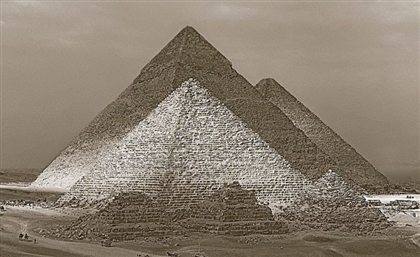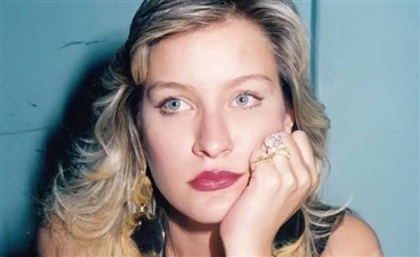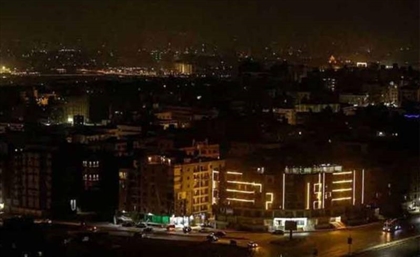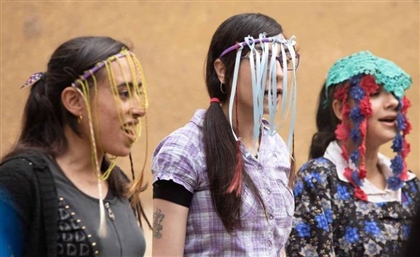The Photographers Behind the Everyday Projects: 5 Talents Making an Impact Across the Region
In the second of our series spotlighting the incredible 'Everyday' movement that has swept the world, Valentina Primo speaks to five contributing photographers changing the narrative often assigned to the Middle East.

Following up on our series on the Everyday Instagram feeds, we take a look at five photojournalists changing the narrative and making an impact in the MENA region through the Everyday Middle East Project. Giving a voice to women’s untold stories, unveiling the tales of those who fled Lebanon's wars, or showcasing Iran’s unreported landscape, these five photographers tell CairoScene why these projects are an important part of their métier and choose some of their favourite photos from the ubiquitous feed.
A photojournalist who has been roaming the Middle East and Africa for the past nine years in a passionate search to tell in-depth stories, Todras-Whitehill became a photographer “to give voice to tales of women that were left untold,” as she explains. “I think it's hard to get positive projects out there but I like to focus on strong women who are changing the world around them.”
A photo posted by Everyday Middle East (@everydaymiddleeast) on
“I love this picture by Sarah Dea. I've never been to Kuwait and this is not what I think of when I think of the country. I was so interested in the story behind it, and for me this represents exactly what Everyday [Middle East] is all about. Learning something new just about every day life in the region. Perfect picture,” she affirms.
A former staff photographer at the Associated Press covering the uprisings, revolutions and numerous elections in the Arab world, Todras-Whitehill is also the co-founder and Director of Photography at Vignette Interactive, a collective of storytellers who craft interactive experiences, mobile applications, video production, photography and media training.
“I really liked the idea of Everyday because we very rarely see it,” she explains as she recalls her involvement with the Instagram ensemble. “In a world of 24/7 news we don't usually see the daily life and only see the horrible things that are happening in the world. This project is a way for people from all different cultures to get that life is normal and funny and odd and interesting in the Middle East, even when there isn't hard hitting news happening”.
Born in Tehran in 1987, Shoaei is a freelance documentary photographer and video producer whose passion for photography developed as a young child. “As far as I can remember, the first time I took a photo, it was with my mother’s camera; it was more like a game for me and I hadn’t yet understood that a photo can affect the world,” he says.
A photo posted by Everyday Middle East (@everydaymiddleeast) on
“I choose this photo because I like everything in it: the suspended child with one hand, the graffiti, the eyes on the wall and the blue sky. I think this child is symbol of the future of the Palestinian people who looking for peace and blue sky,” he says has he points out to the picture, recently published by Wissam Nassar in Gaza.
Shoaei’s work has been published across numerous international publications, including The Guardian, Le Quotidien, Denver Post, USA Today and Die Welt. His recent project Photography in Bed is a silent, thought-provoking essay which blends exquisite contrasts with social commentary on the impact of technology in our lives.
Shoaei recalls he was not familiar with the Everyday Middle East project until he received and email from its founder, Lindsay Mackenzie, who invited him to contribute. “I liked the idea because she didn’t want stereotypical photos of Iran as other media, and I thought that I can publish photos that I like to show to the world, free from filters and distortion,” he explains.
“Through Instagram I possess a medium with a huge and vast audience. I can take a walk in the street and take pictures without bothering anyone or getting too much attention and without being worried about opinions and interests of this and that news agency. This way, I can easily show what is inside me and concentrate on the truths,” he says.
Born, raised and based in Lebanon, Khamissy made an incursion into architecture before fully embarking into a thriving journey as a photographer, with work published across international media and exhibitions held widely throughout Europe, America and the MENA region. Since 2011, Khamissy has been extensively covering the Syrian war, documenting the lives of Syrian refugees in Lebanon and Jordan
A photo posted by Everyday Middle East (@everydaymiddleeast) on
“There are many photos that make 'my heart happy', but if I had to choose one, it would be this one,” she points out. As she scans through the pictures in the collective, she recalls how this kid jumping into a river reminded her of her childhood. “This photo was posted after the founding of Islamic State, when most of the articles, if not all, coming out from Iraq, were very sad. It reminded me of myself and my neighbours and friends, when we used to find a few hours of ceasefire during the civil war and we were allowed to go out to the street to play before the bombing started. It is this resilience that we have in this region that makes us able to keep going on,” she says.
Interested in social documentary photography as a tool for telling the stories of people she relates to, Khamissy carried out her first personal long-term project in 2004, as she focused on the refugees stuck at the border between Jordan and Iraq, after fleeing the war in 2003.
In 2007, she documented spaces that were damaged and abandoned after the Israeli aggression on Lebanon in 2006. “The Abandoned Spaces was a project I had to do to find some peace after the war; and it was only after doing this series this that I realised that in order to understand the wars that I lived since I was a child, starting with the 1975-90 Lebanese civil war and the many wars that followed, I have to investigate and photograph their impact on the society,” she explains. Nowadays, Khamissy works on The Missing of Lebanon, a project she began in 2010 to tell the stories of the families of the 17,000 estimated people who are missing after the 1975-90 Lebanese civil war.
Reflecting on the impact of Everyday Middle East, Khamissy recalls an endearing message she received last August, as Israel carried out its offensive on Gaza, Syria was continuously devastated by bombings, and the Islamic State began its rise in Iraq. “The news from the region were devastating, someone contacted me. He was so confused about the situation in the region that he was not being able to react but wanted to tell me he saw a photo that I had posted of a Syrian gay couple that touched him; he saw it on Everyday Middle East, a feed that 'makes his heart happy,' he said. I guess so many people feel the same about the project.”
A graphic designer born and raised in Jeddah, Aldabbagh focuses her documentary work on the lives of women in and from Saudi Arabia. Now based in Sarajevo, she is also a contributor of Everyday Eastern Europe and boasts a beautiful collection specialised in maternity, baby, and family photography, also available on Instagram.
A photo posted by Everyday Middle East (@everydaymiddleeast) on
“There are a lot of amazing photos but this one recently posted by Tanya Habjouqa stood out to me because the Palestinian in me is automatically attracted to images of my father's homeland, and because Habjouqa succeeded in showing that (other) side that we never see in the media. At the risk of sounding cliche, for me, the photo symbolises hope, through women and the youth,” she says.
Recognised for her Instagram feed of images showcasing the Middle East, Aldabbagh was invited by the project’s founder to become a contributor. “The idea to show non-stereotypical, everyday moments from the region spoke to my heart, especially as I come from a culturally and ethnically diverse background (that is always stereotyped) myself, and living in a society that is misunderstood,” she explains.
“Personally, I am amazed at what I am seeing from my peers in the group - there's a lot in this world that is still unknown yet intriguing to me. I also noticed the followers of our project are sometimes surprised by the images I produce from Jeddah, and I'm glad I'm shedding some light on another side. It's educational for us as contributors and our followers,” she concludes.
Laura El-Tantawy
An Egyptian photographer exploring social and environmental issues, El Tantawy joined Everyday Africa and Everyday MiddleEast to pursue her interest in pictures that are not cliché; images that explore a narrative beyond what has become common place.
A photo posted by Laura El-Tantawy (@laura_eltantawy) on
For El-Tantaway, choosing a single picture to describe the project’s impact is impossible. “Each image has its own story and I can argue they are all important one way or another. My favourite images would be ones that are strong visually and artistically and that have a relevant viewpoint. Images that stimulate thought and go beyond the obvious,” she says.
Born in Worcestershire, England to Egyptian parents and growing up between Egypt, Saudi Arabia and the US, her project, In the Shadow Of the Pyramids, is a thought-provoking attempt to reconnect with a country she felt she no longer knew. “I began to explore the essence of Egyptian identity in the hope of coming to terms with my own. The streets were my starting point, realising if I found answers among the people, I could begin to piece together my identity once again,” she explains as she describes the project.
The Everyday feeds, she points out, play an important part in producing a narrative that challenges racial and religious stereotypes, especially to a younger audience on social media. “I think if you just see the comments under the images you will see the range of reactions they stimulate – from the surprised, disappointed, pleased to the standard disagree for the sake of just disagreeing or refusing to see there is a different vision to what has become grounded in our minds. I think these are all great reactions because they show conversations are being started and people are debating."
- Previous Article VIDEO: Man Wears Tutu and Dances on New Cairo Road 90
- Next Article Saudi Prince Donates Entire $32 Billion Fortune to Charity
























